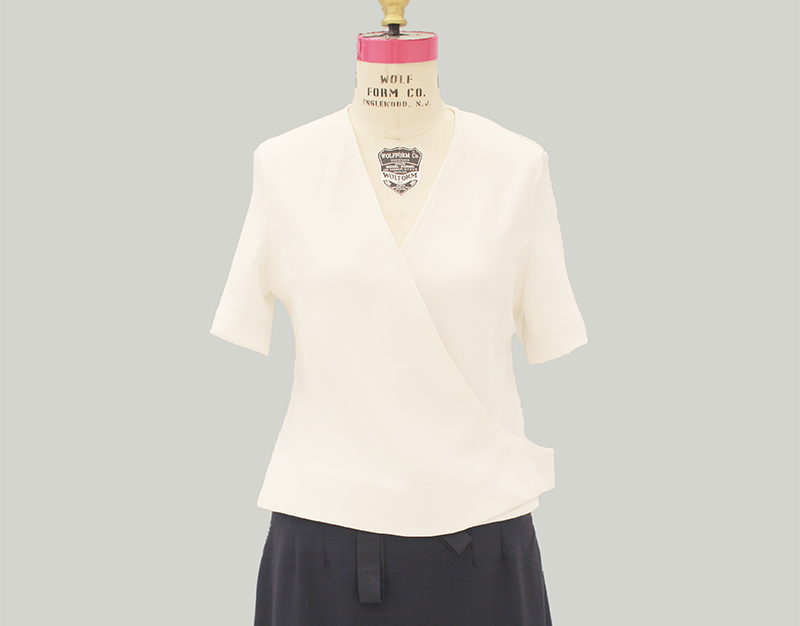CONTEXT
If you aren’t old now, you will be one day. And at a certain age, the product choice that we’ve become accustomed to throughout our lives — when choosing a baby carriage or selecting a cell phone case — disappears. Products designed for the elderly are uniformly clinical in their aesthetic and reinforce a narrative of inevitable decline. They ignore the humanity and the diverse personalities of their users. These products are maligned and stigmatized by users and non-users alike; and as a result, many people avoid using the tools they might need.
My canes tell a different story about aging. This story is optimistic and aspirational, and most importantly, grounded in the lived experience of older adults. The canes speak to the vibrancy, exuberance, whimsy, and fun that can come with age, while also acknowledging physical realities. They treat the aging process — and older people themselves — as worthy of being seen and celebrated.
The cane design shown here was developed through my thesis at RISD. After graduating, I was selected for the Brown University's Breakthrough Lab, where I honed the business strategy. I launched Grand Design in the fall of 2019.


RESEARCH AND INSIGHTS
In order to create a brief for a new cane, I worked with the MIT AgeLab to organize a product design workshop with their Lifestyle Leaders group. Admission to the Lifestyle Leaders is based on age: you have to be at least 85 to qualify. After giving a presentation about product design and some of my thesis projects, I joined one of the discussion groups to get their feedback. The nine of us — seven leaders, a Research Specialist at the AgeLab, and myself — clustered around a conference table.
“There should be style in everything we do,” Anne began. “Style enhances our life. It is important for the people who feel that they’re pitiable, or not whole, because they require a device. We stereotype devices as much as we stereotype the people who use them. The devices become a mark of senility.”
This proved a point of contention. Kathryn immediately countered: “Style doesn’t matter to me. It just has to be convenient.” Fran nodded. “Style is nice, but it’s not necessary.”
“I think it’s about your attitude,” Maggie added. “I don’t let anything stop me. I don’t let anyone pity or patronize me.”
Presenting to the Lifestyle Leaders at the MIT AgeLab.
As I designer, I struggled to reconcile this division around the value of aesthetics and style with my own obvious bias. The Lifestyle Leaders conversation roughly mirrored many others I had throughout my other cane conversations: some inherently valued beauty, others found it irrelevant. But it also helped me realize that I wasn’t necessarily designing these products for all older adults; I could focus my work on those who, as Anne mentioned, might feel pitiable or less than. For them, a tool’s beauty would serve a functional purpose, increasingly the likelihood that it would be used.

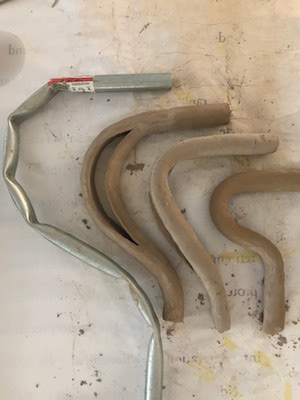



For the overall silhouettes, I used conduit, clay, foam, and wood.
DESIGN AND PRODUCTION
I sketched, rendered, and physically prototyped dozens of cane silhouettes, handles, and feet throughout the design process, sharing samples with a few Lifestyle Leaders that I kept in touch with. While I was discussing ergonomics and style with them, I was also investigating production feasibility on my own.
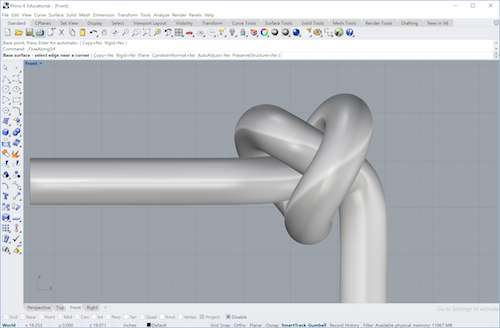

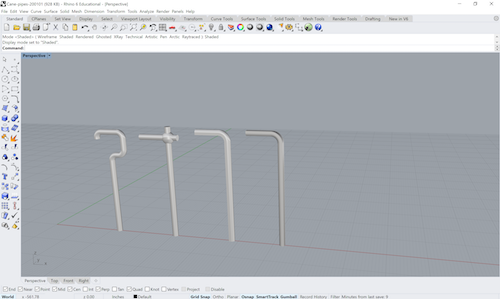
At one point, I thought I might use carbon fiber — which allowed me to explore more unusual joints that would connect to tubing.





I explored foot forms by turning cork on a lathe. For handles, I used cast plastic, wax, and vacuum-formed carbon fiber.
FINAL DESIGN
The cane is designed to maximize personal expression, with the intention of ultimately increasing adoption and decreasing stigma. Its elaborate form and attention to craft fully pushes it into the realm of an accessory. And like many accessories, it is meant to be a point of attraction and difference, to say “look at me” when the general public might more often look away. When I’ve taken the cane out in public, it usually elicits a few questions immediately. Is that one piece of wood? How is it made?
It is intended for users like Anne and Gloria, who take extra pride in their objects. As Gloria told me: “I want something unusual and different. I really dress up when I go out, so it would have to be updated, sophisticated, beautiful, and eye-catching.”
From a functional standpoint, my cane leverages many common aspects of more utilitarian canes: the handle is placed over the center of gravity, the materials are sturdy and durable yet lightweight, and the curvature of the tip allows for an angled approach. The stacked leather foot, a feature borrowed from shoes, strengthens the item’s connection to fashion while also absorbing shock.

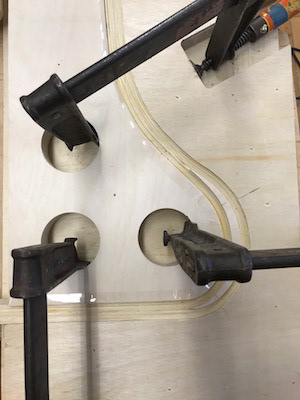



I produced the final design through a two-part bent lamination process. I tested the load bearing capacity with an Instron electromechanical machine.



I produced the final design in a variety of wood species and finishes. Shown here are walnut, white oak/walnut, and aqua-dyed ash.


